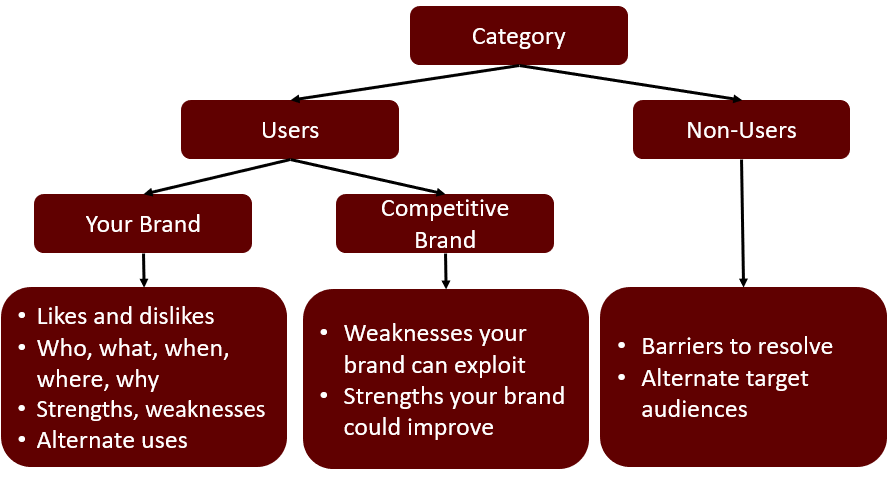We know who our target research audience is. Or do we?
Conducting market research for your product or service usually means targeting your brand users. Who better to explain the good, the bad, and the ugly than those who already use it on a regular basis. But wise researchers know that the best set of knowledge, the full and broadest set, is one sourced from many audiences. So let’s consider the full range of people who are in the position to help marketers and brand managers truly understand a brand.
In addition to brand users, competitive brand users have much to teach us. Not only can they tell you what they love about the competitive brand, they can also tell you which features and attributes led them to choose that brand over yours. Once you thoroughly understand your competitor’s strengths, you can determine if those are weaknesses that you need to overcome or react to, or differentiators that you can market to. Similarly, you can determine whether their weaknesses are your strengths so that you can build on and maintain those differentiators. Thus, if you’re mainly concerned with researching perceptions and opinions about, for instance, Crest toothpaste, consider adding a segment of Colgate users to broaden your perspective.
Another way to broaden your knowledge around your brand is to target not simply brand users, but also category users. Rather than focusing on just your brand or your main competitor’s brand, you can position yourself to learn about the entire category. For instance, learn how, when, and why people turn to the category, and determine whether some of those reasons are more applicable to your brand versus others. Once again, reasons that are more applicable to your brand will serve as important differentiaters. And, you can gain a better understanding of your brand’s place within the entire competitive set.
 Lastly, and not necessarily the least, targeting category non-users also has benefits. Why does someone in your target audience NOT use or purchase the category or brand? Are they embarrassed? Uninformed about the benefits? Unable to afford it? Do they not require it for some reason you were previously unaware of? If you’re researching toothpaste users, consider adding a segment of toothpaste nonusers to truly access all of the knowledge about your product.
Lastly, and not necessarily the least, targeting category non-users also has benefits. Why does someone in your target audience NOT use or purchase the category or brand? Are they embarrassed? Uninformed about the benefits? Unable to afford it? Do they not require it for some reason you were previously unaware of? If you’re researching toothpaste users, consider adding a segment of toothpaste nonusers to truly access all of the knowledge about your product.
While you’re at it, don’t forget to ask what they use your product for even if it’s beyond obvious. It’s easy to assume that people use toothpaste to brush their teeth, but a simple question could lead you to a new discovery. Did you know that people have had success using toothpaste to clean piano keys and running shoes, deodorize food containers, keep swimming goggles from fogging up, polish jewelry, and remove make-up stains from clothing? Personally, I’ve used it in an emergency to adhere posters to the wall when tape was unavailable!
The next time you’re deciding on the most appropriate target group for your research, consider whether you’ve drawn the targeting strings too tightly. Consider whether the people you’re screening out might actually have tidbits of insight that could change how you present and market your brand! We’d love to help you decide on the best target group for your research. Please get in touch with us!
You might like to read these:
Follow us on Twitter or Linkedin, or sign up for our newsletter!




